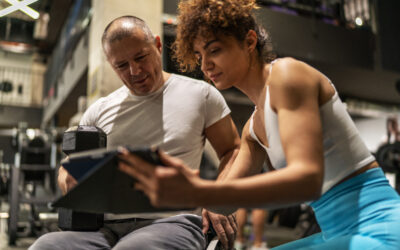Your Guide to Russian Twists
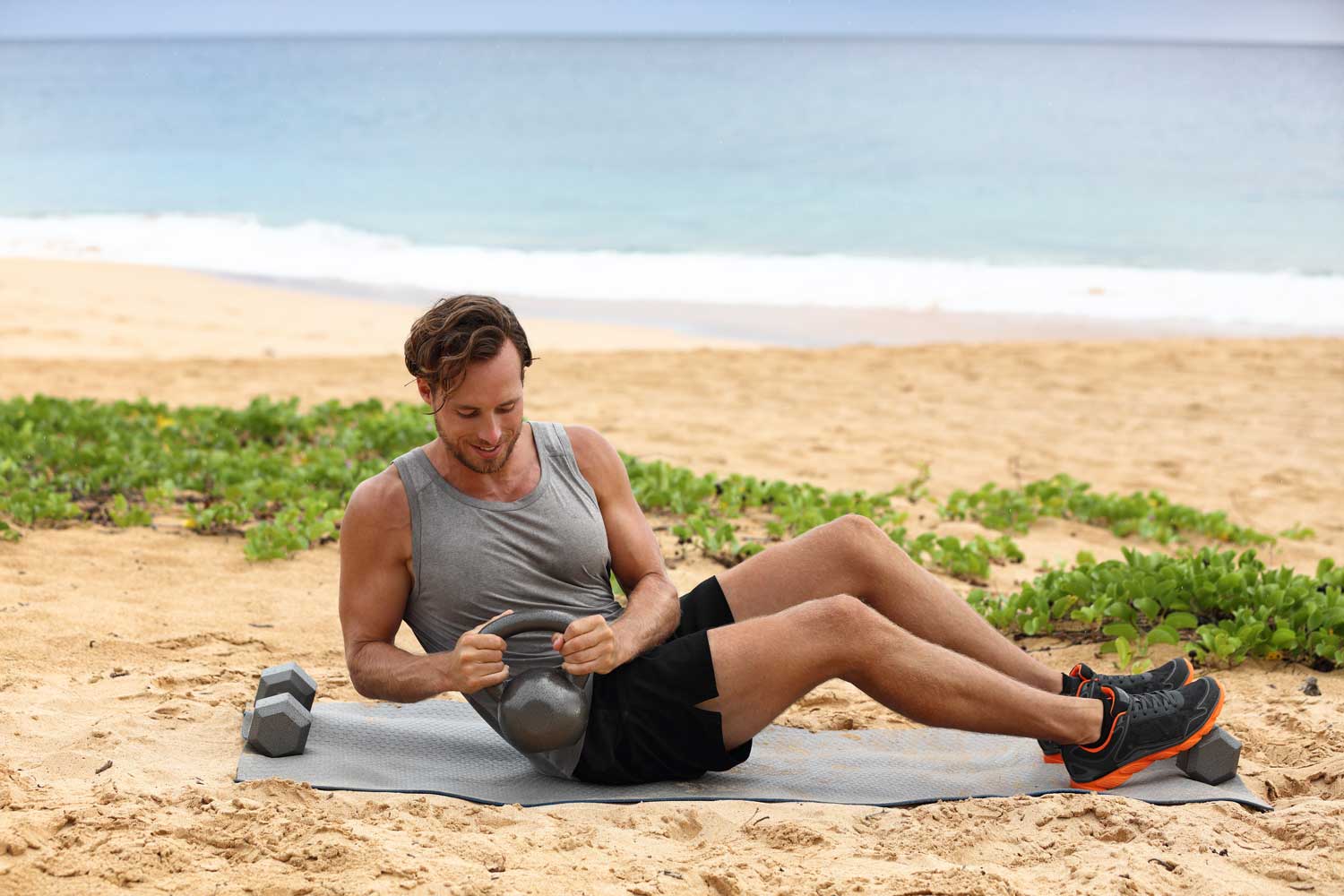
It sounds like some kind of crazy dance move, but the Russian twist is actually a useful core exercise that challenges more than just your abs. It’s a good staple for accessory work and useful to shake up your normal routine of situps and leg lifts, which only work your abs on a vertical plane and can get *yawn* boring.
Plus, if anyone who has a six-pack can do Russian twists, you should be able to do them too!

Russian twists for a strong core
Russian twists work your abdominal muscles and obliques, but also your hip flexors, shoulders, and upper back. They strengthen rotational movement which translates to a ton of sports like baseball, football, tennis, martial arts, and hockey.
They count toward basically anything that requires you to keep your core stable while twisting (think golfing, paddling a kayak, or punching your younger brother).
Check out our guide below and learn how to do Russian twists with good form so you can get that much closer to the abs of your dreams.
Core anatomy refresher
Your core is made up of a complex system of muscle layers designed to keep your body upright and facilitate functional movement. Almost everything you do involves your core somehow, so it pays to have a strong one.
Your rectus abdominis (“abs”) are the rectangular front-facing muscles we know and love as the “six-pack”—not just there to look cool, your abs are responsible for stabilizing and flexing your low back and pelvis.
Your obliques come in two forms: external and internal, depending on where they are among the core layers. They allow your body to rotate and bend sideways.
Underneath the obliques is a band of muscle called the transverse abdominis. It’s an important part of your core that helps with pelvic floor control and acts as your body’s natural weightlifting belt.
The Russian twist challenges each of these core anatomy pieces along with a few other supporting muscle groups:
- hip flexors
- erector spinae
- scapular muscles
- latissimus dorsi
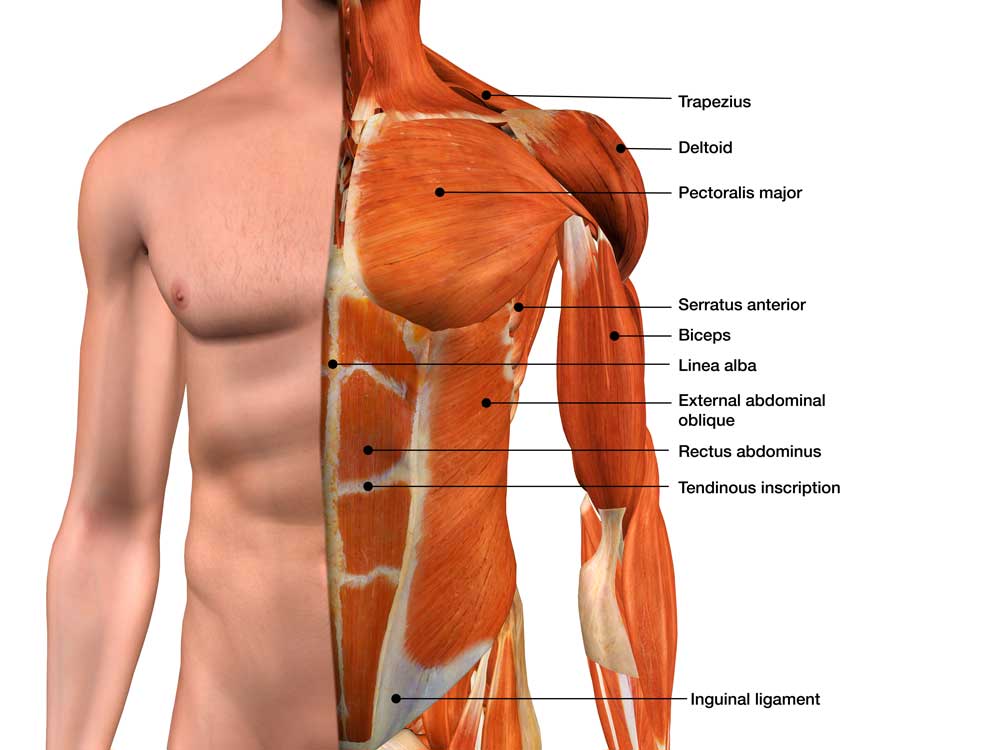
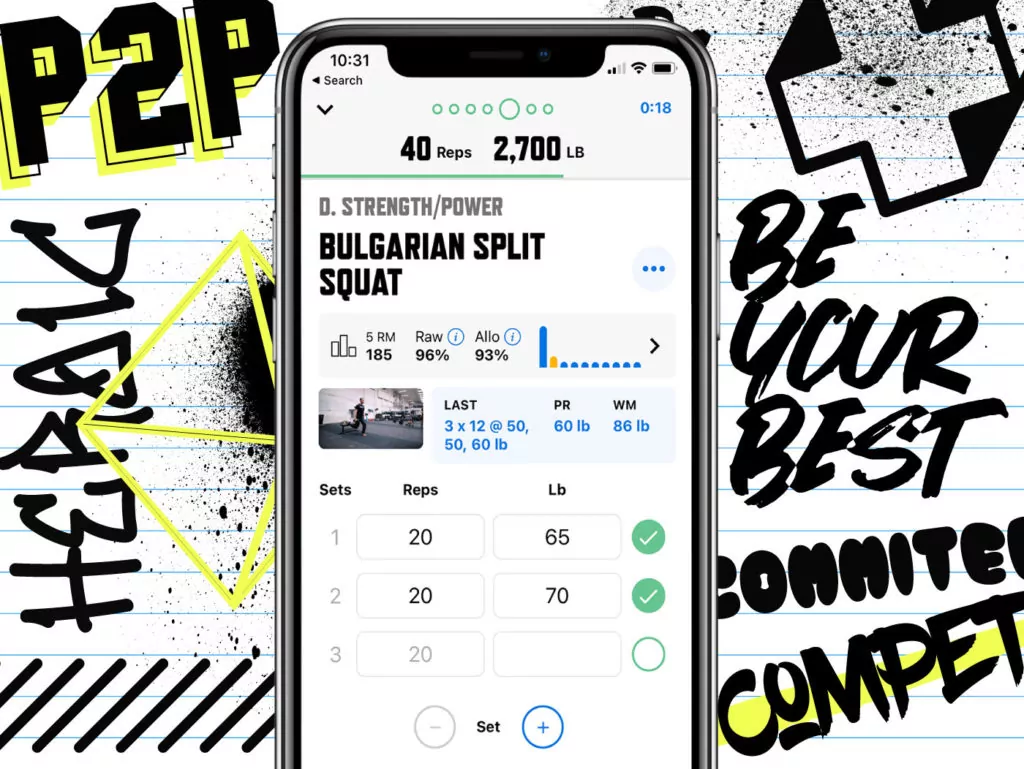

DOWNLOAD
trainheroic’s
free APP
How to do a Russian twist
Points of performance
Setup
Grab a yoga mat or something to cushion your tailbone. Sit on it with your knees bent and your feet on the floor to start. Lean back so your torso is at a 45 degree angle with the floor. Bring your hands to your chest so only your butt and feet are touching the floor.
Brace & Twist
With your back straight (don’t slouch or round), brace your core and rotate your upper body, alternating to the left and right.
Don’t just move your arms from side to side. The goal is to actually rotate your whole torso in each direction. It helps to let your gaze follow your hands instead of looking forward. Your upper body and torso will turn in the direction your eyes go.
Keep your knees together to activate your lower core. Crossing them might make it easier for beginners, but don’t cross them if you don’t have to.
Coach’s Tip: Don’t cheat by shortening the movement! Go for full reach every rep by trying to touch the floor on each side.
Make it harder
Elevate Your Feet
Challenge your balance and force your stabilizing muscles to work harder by lifting your feet a few inches off the ground. Once you can do this, you should elevate your feet every time. (Check out the Mason twist below to make this even nastier.)
Add Weight
What’s the best way to make something harder? Add resistance. Hold a plate, dumbbell, kettlebell, medicine ball, or jug of water in both hands over your chest and twist with the weight. Aim to get the weight to tap the floor on each side.
Try the Wood Chopper
Another way to add weight to a rotational movement is the wood chopper. Instead of sitting, you’ll do this one standing using a band or cable machine for resistance. Check out Scott Herman’s how-to for the wood chopper here.
Do the Mason Twist
We’ve heard this variation called a few different things, but the source of all sources (Wikipedia) calls it the Mason twist. If Russian twists just aren’t hard enough, the Mason twist is a more advanced version. Setup is the same, but instead of bending your knees, hold your legs straight up in the air like a V-up. Give this one a try if you’re looking to master that gymnastic L-sit hold. Point your toes!
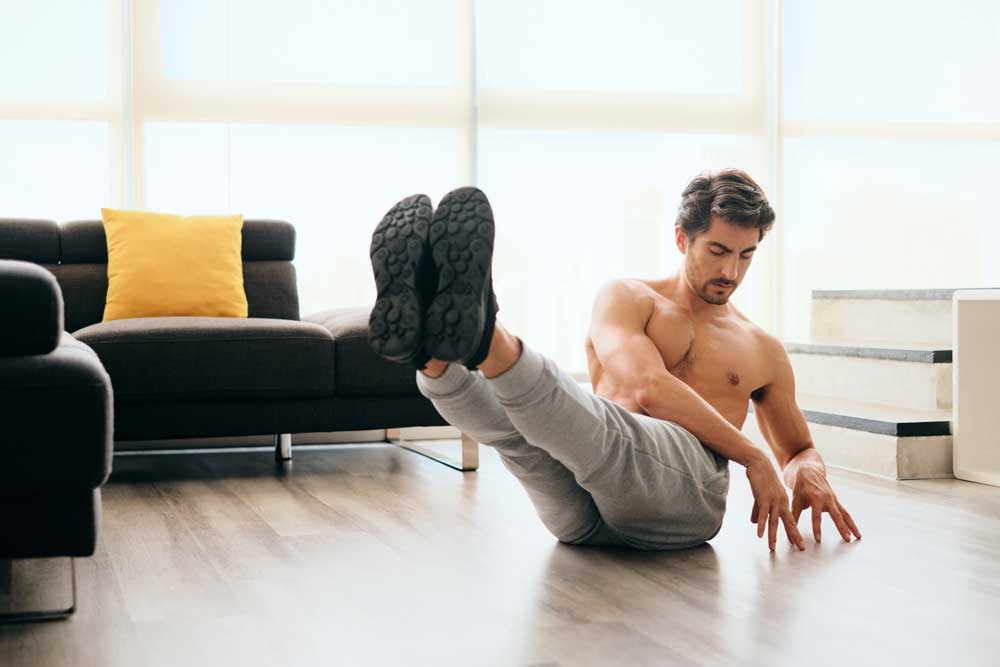
The Marketplace: Shop Expert Programming from Real Coaches
Sometimes all you need to reach your destination on your fitness journey is an expert guide. We’ve got you covered.
Browse from thousands of programs for any goal and every type of athlete.
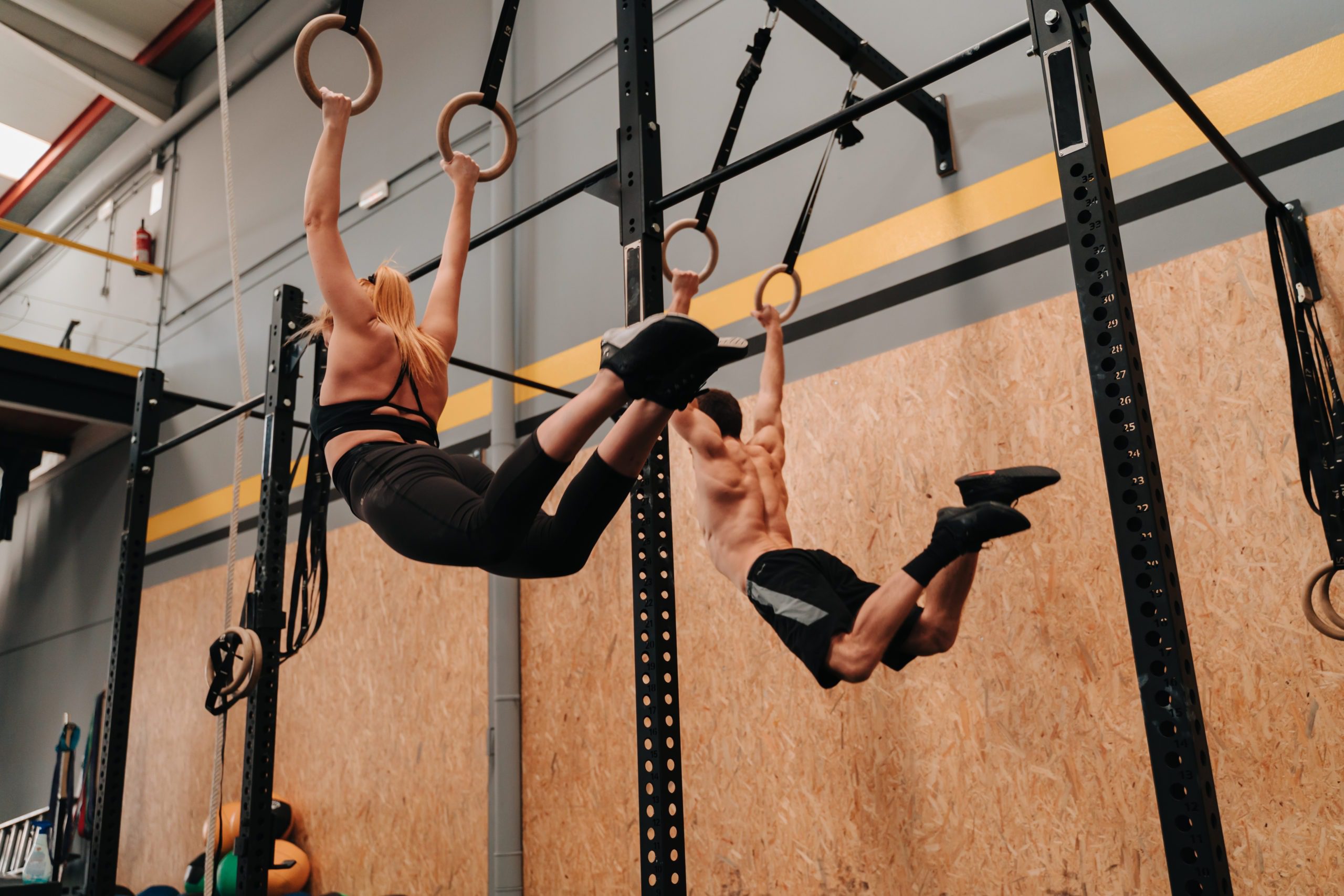
Russian twists & back pain
A pervasive question across fitness channels: are Russian twists bad for your back?
You may have heard some trainers spout that Russian twists hurt your spine, but they’re probably saying that to get clicks and views.
The short answer is no—in the same way deadlifts aren’t bad for your back if you do them properly.
Sure, if you’re doing them wrong or with sloppy form, any core movement can aggravate existing sciatica or disc issues. Back pain from herniated or bulging discs (swelling of the fluid between your spinal bones) can come up when the discs inflate and hit your nerves. You want to avoid adding pressure to those already strained discs.
The feel-elevated half situp position of the Russian twist in which your body makes a V-shape can put pressure on your spine, but it shouldn’t hurt. If you’re having back pain issues, chat with your physical therapist so they can give you individualized modifications for oblique twisting movements.
Having a strong core is actually good for your back, because it helps stabilize your spine. If you have a healthy spine, you should be able to do Russian twists pain-free.

Lily frei
Lily is TrainHeroic’s Marketing Content Creator and a CF-L1 with an English background. She was a successful freelance marketer for the functional fitness industry until being scooped up by TrainHeroic. An uncommon combo of bookish, artsy word-nerd and lifelong athlete, Lily is passionately devoted to weightlifting, CrossFit, yoga, dance, and aerial acrobatics. Find her showcasing her artist-athlete hobbies on IG @lilylectric.
Related articles
5 Powerful Tips for Fitness Coaches Who Want to Stand Out
If you’re in the trenches as a coach or trainer, you already know this industry doesn’t hand out gold stars for effort. The fitness space is saturated, competitive, and often filled with more flash than substance. If you're just starting out or years deep, what...
3 Ways to Improve Mobility Without Stretching
Are you still trying the endless foam rolling and stretching exercises to get that deep squat position? We know how important mobility is for great, or even GOOD performance. All professional athletes have some comfortability in end ranges of motion. So, what else do...
The Ultimate Guide to Lunges: Queen of all Glute Exercises
Your glutes are the largest muscle group in your body. They’re responsible for almost everything your legs do—walking, running, jumping, squatting, lunging, and just standing upright. As far as moving through space goes, strong glutes are the bedrock of overall...

Join the community
Sign up for the latest training news and updates from TrainHeroic

About TrainHeroic
Support
Made with love, sweat, protein isolate and hard work in Denver, CO
© 2021 TrainHeroic, Inc. All rights reserved.

